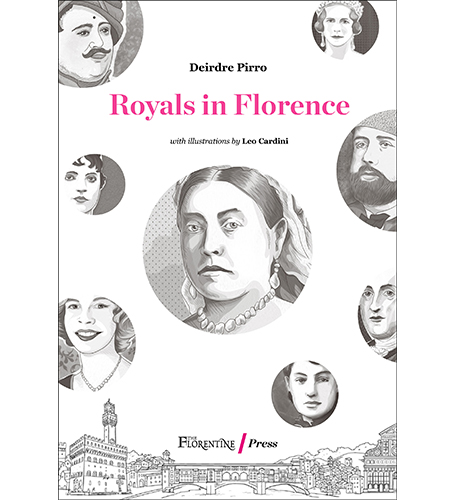On March 20, 1944, a member of the Royal House of Karadjordjevic and the last king of Yugoslavia, Peter II married Princess Alexandra of Greece and Denmark in a ceremony at the Yugoslav Legation in London. Peter had become the youngest ruler in Europe when he was proclaimed king aged 11 after his father was assassinated by a Macedonian terrorist in 1934 during a state visit to France. In marrying, the king had defied his mother, the Dowager Queen Maria of Yugoslavia and his government-in-exile in England after Axis forces had occupied his country in April 1941. The wedding ceremony was performed by priests from the Serbian and Greek Orthodox churches and was celebrated in both languages. The beautiful, dark-haired bride wore a long, white satin gown and a lace veil, while her future husband was dressed in his Royal Air Force uniform. He was 20 and she was 22. Guests included King George VI, King George of Greece, King Haakon of Norway, the Duchess of Kent, and Queen Wilhelmina of the Netherlands.
A year later, the happy couple gave birth to their only son, Crown Prince Alexander, in their suite at Claridge’s Hotel in London, which, by special decree, King George VI declared to be Yugoslav territory for that day. Their happiness was fleeting, however, because, on November 29, 1945, Peter was deposed by Yugoslavia’s Communist Constituent Assembly, led by Marshal Josip Broz Tito, and Yugoslavia was proclaimed a republic. Now Peter and his queen of just 20 months, who had never set foot on Yugoslavian soil, were without a kingdom and with very little money as their properties and assets had been confiscated.
Hardship was not new to Alexandra who, unlike Peter, had lived much of her life in exile. She was born five months after her father, King Alexander of Greece, died of sepsis, aged 27 caused by a monkey bite. Her mother was Alexander’s morganatic wife, Aspasia Manos, who was not of noble birth, although she came from an old Athenian aristocratic family. For this reason, neither mother nor daughter were considered part of the Greek royal family until July 1922, when, thanks to the Dowager Queen Sophia, a law was passed retroactively recognizing non-dynastic marriages of members of the royal family, thus allowing them to use the title of Her Royal Highness of Greece and Denmark.

Princess Alexandra of Greece and Denmark, Queen of Yugoslavia. Illustration by Leo Cardini
In 1924, following the deposition of the royal family and its exile, Alexandra and her mother found refuge with Queen Sophia and her daughters at her villa near Florence, where they remained for three years. Then, after the restoration of the Hellenic throne in 1935, they often visited Greece, but in 1940 the Greco-Italian War stopped them from returning to Italy. With the invasion of Greece by the Axis powers in 1941, they moved to the United Kingdom. There, Alexandra met Peter in London while she was volunteering with the Red Cross. Although she had received other royal proposals, such as from King Zog of Albania, she fell in love with Peter and married him, but it was destined to be a turbulent marriage. Penniless and unprepared to live the life of ordinary folk, the couple seemed incapable of sorting out their financial and domestic problems. Depressed, Alexandra made several suicide attempts: the first was in 1950 at the Garden of Eden, her mother’s home in Venice, which she had bought from British politician Sir Anthony Eden’s sister; the second occurred in 1953, when she slashed her left wrist with a pen knife in a Paris hotel after Peter had refused her plea for a reconciliation and told her he would continue with his divorce petition for her alleged desertion before a Paris court. Alexandra refused to recognize the jurisdiction of the French court, but over the next year lost two appeals to fight it. The third failed attempt would come in 1963, again in Venice.
With the help of family, Peter reconciled with Alexandra and dropped the divorce proceedings. Hounded by money worries and abandoned by the British government, the couple moved to Paris and Monte Carlo, then to Switzerland, but finally left for America where they settled in New York City. In 1951, they were retained by a public relations company there to be available for “consultant services and public appearances for a number of prestige clients”. The idea was for Peter to help with the introduction of a new type of sports car and Alexandra to design clothes. Like others, neither project eventuated.
In 1956, Alessandra co-wrote the story of her life titled For Love of a King, which was translated into French a year later. Her second book, published in 1959, was about her cousin, the Duke of Edinburgh. Again back in France, the reconciliation floundered and Peter returned to America, while Alessandra retreated to her mother in Venice. Once recovered from her third attempted suicide, yet again the couple reconciled, but only temporarily. When this too ended, Peter returned permanently and alone to America where he died in Denver on November 3, 1970, aged 47, from an unsuccessful liver transplant necessitated by cirrhosis of the liver. He was buried in the Saint Sava Monastery Church at Libertyville, Illinois, making him the only European monarch ever to be interred in America. Alexandra was unable to attend the funeral.
In 1972, Alexandra’s mother died and seven years later she sold the Garden of Eden and returned to England, in poor health, where she died of cancer at 71 on January 30, 1993. After her funeral in London, her body was sent to Greece for burial next to her mother in the royal cemetery in the park at Tatoi Palace. On May 26, 2013, her remains were again transferred, this time to Serbia, for reburial in the crypt of the Royal Mausoleum at Oplenac. In a solemn ceremony, the remains of her husband, his mother and his brother, Prince Andrew, were also reburied along with her.
Royals in Florence: the book

Florence has always held a certain allure for royalty. In Royals in Florence, we meet the regal figures who have resided or vacationed in the Renaissance city and its hills from the eighteenth century onwards. This collection of essays by writer and researcher Deirdre Pirro is a treat for the seasoned Italy lover. Illustrated by Leo Cardini.
Buy the book (12 euro): theflr.net/royalsinflorence








